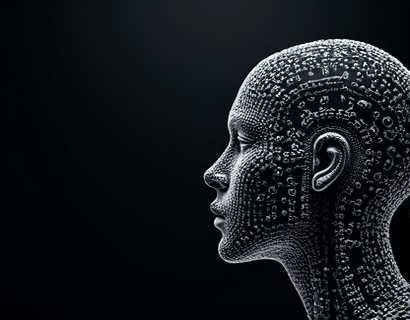Unlocking Device Potential: The Future of Open-Source Technology for Enhanced Performance and User-Centric Design
The landscape of technology is rapidly evolving, driven by the relentless pursuit of innovation and the democratization of access to advanced tools. At the heart of this transformation is the open-source movement, which has been instrumental in fostering a collaborative environment where developers, tech enthusiasts, and users can come together to create, improve, and share software. This article delves into the future of device performance and user experience, focusing on an innovative open-source operating system that promises unparalleled flexibility, extensive customization, and seamless integration across devices. This system is designed to make advanced technology accessible and efficient for everyone, redefining the way we interact with our devices.
The concept of an open operating system is not new, but the recent advancements in this space have brought it to the forefront of technological discussions. Unlike proprietary systems, open-source operating systems are built on the principles of transparency, community contribution, and freedom. This approach not only accelerates development but also ensures that the software remains adaptable and secure. The open-source model allows for a diverse range of contributors, from amateur enthusiasts to professional developers, each bringing unique perspectives and skills to the table. This collaborative environment is crucial for pushing the boundaries of what is possible in device performance and user experience.
One of the key advantages of an open-source operating system is its flexibility. Users are not bound by the constraints of a closed ecosystem, where updates and features are dictated by a single entity. Instead, they have the freedom to modify and tailor the system to their specific needs. This level of customization extends to hardware compatibility, allowing the operating system to run on a wide variety of devices, from low-power IoT gadgets to high-performance desktops. The ability to optimize the system for different hardware configurations ensures that performance is maximized, regardless of the device's specifications.
Customization is not just a feature; it is a core principle of this open-source operating system. Users can tweak every aspect of the system, from the user interface to the underlying services. This granular control enables power users to create highly personalized environments that enhance productivity and creativity. For example, developers can configure the system to support multiple development environments, streamline workflows, and integrate with various tools and services. This level of customization also benefits end-users, who can adjust the system to suit their preferences and needs, creating a more intuitive and user-friendly experience.
Seamless integration across devices is another significant advantage of this open-source operating system. In an era where users interact with multiple devices throughout the day, the ability to have a consistent and cohesive experience is invaluable. Whether switching from a smartphone to a laptop or connecting a smart home device, the system ensures that data and settings are synchronized seamlessly. This interoperability is achieved through a robust set of protocols and standards that facilitate communication between different devices and platforms. The result is a unified ecosystem where users can enjoy a smooth and uninterrupted experience, enhancing both convenience and efficiency.
The impact of such an open-source operating system on device performance cannot be overstated. By leveraging community-driven development, the system benefits from constant improvements and optimizations. Bugs are identified and fixed quickly, and new features are added regularly, ensuring that the system remains at the cutting edge of technology. This rapid iteration cycle means that users always have access to the latest advancements, without the delays often associated with proprietary software updates. Additionally, the open nature of the system allows for specialized optimizations, such as low-power modes for mobile devices or enhanced graphics performance for gaming systems, further boosting overall performance.
User-centric design is a cornerstone of this open-source operating system. The development process is guided by user feedback and requirements, ensuring that the final product meets the real-world needs of its users. This approach contrasts sharply with traditional software development, where user input is often an afterthought. By involving users in the design and testing phases, the system can be refined to provide a more intuitive and accessible experience. For instance, accessibility features can be tailored to meet the needs of users with disabilities, and interface elements can be designed to be more intuitive for non-technical users. This focus on the user ensures that the technology is not only powerful but also user-friendly.
The benefits of this open-source operating system extend beyond individual devices to the broader tech ecosystem. Developers can build applications and services that are compatible with a wide range of devices and platforms, fostering a more open and interconnected environment. This compatibility encourages innovation, as developers are free to experiment with new ideas and integrate diverse technologies. The open-source nature also promotes knowledge sharing and skill development, as developers can learn from each other's work and contribute to the collective knowledge base. This collaborative spirit is essential for driving the tech industry forward and addressing complex challenges such as cybersecurity, privacy, and sustainability.
In the realm of IoT and smart homes, this open-source operating system plays a pivotal role in creating a truly integrated and intelligent environment. Devices from different manufacturers can work together seamlessly, sharing data and coordinating actions based on user preferences and contextual information. For example, a smart thermostat can communicate with a smart lighting system to optimize energy usage, or a smart speaker can control various connected devices with voice commands. This level of integration not only enhances convenience but also leads to more efficient and sustainable use of resources.
The educational aspect of this open-source operating system should not be underestimated. By providing access to the underlying code and documentation, the system serves as a valuable learning tool for students, educators, and self-learners. It offers a hands-on approach to understanding how operating systems work, from the kernel level to the application layer. This educational value is particularly important in a world where digital literacy is becoming increasingly crucial. By demystifying the inner workings of technology, the system empowers individuals to become more informed and capable users, ready to tackle future challenges.
Moreover, the open-source community surrounding this operating system is a vibrant and dynamic force. Forums, chat channels, and collaborative platforms provide spaces for users and developers to connect, share knowledge, and solve problems together. This community support is invaluable, especially for users who may not have extensive technical expertise. The collective wisdom and experience within the community can help overcome obstacles and unlock new possibilities, making the system accessible to a wider audience. This sense of community also fosters a culture of inclusivity and collaboration, aligning with the core values of open-source software.
Looking ahead, the future of this open-source operating system is promising. As more devices become connected and the demand for advanced computing capabilities grows, the need for a flexible, customizable, and user-centric operating system will only increase. The ongoing development and refinement of the system will likely lead to even greater performance improvements, security enhancements, and innovative features. The open-source model ensures that these advancements are shared widely, benefiting the entire tech community. As the system continues to evolve, it will likely inspire new applications and use cases, further expanding its impact on the tech landscape.
In conclusion, the future of device performance and user experience is being shaped by the power of open-source technology. This innovative operating system represents a significant step forward, offering unparalleled flexibility, extensive customization, and seamless integration. By making advanced technology accessible and efficient for everyone, it is not only enhancing individual devices but also contributing to a more interconnected and intelligent world. The open-source movement, with its emphasis on collaboration and user empowerment, is driving this transformation, ensuring that the benefits of technological progress are shared by all.










































